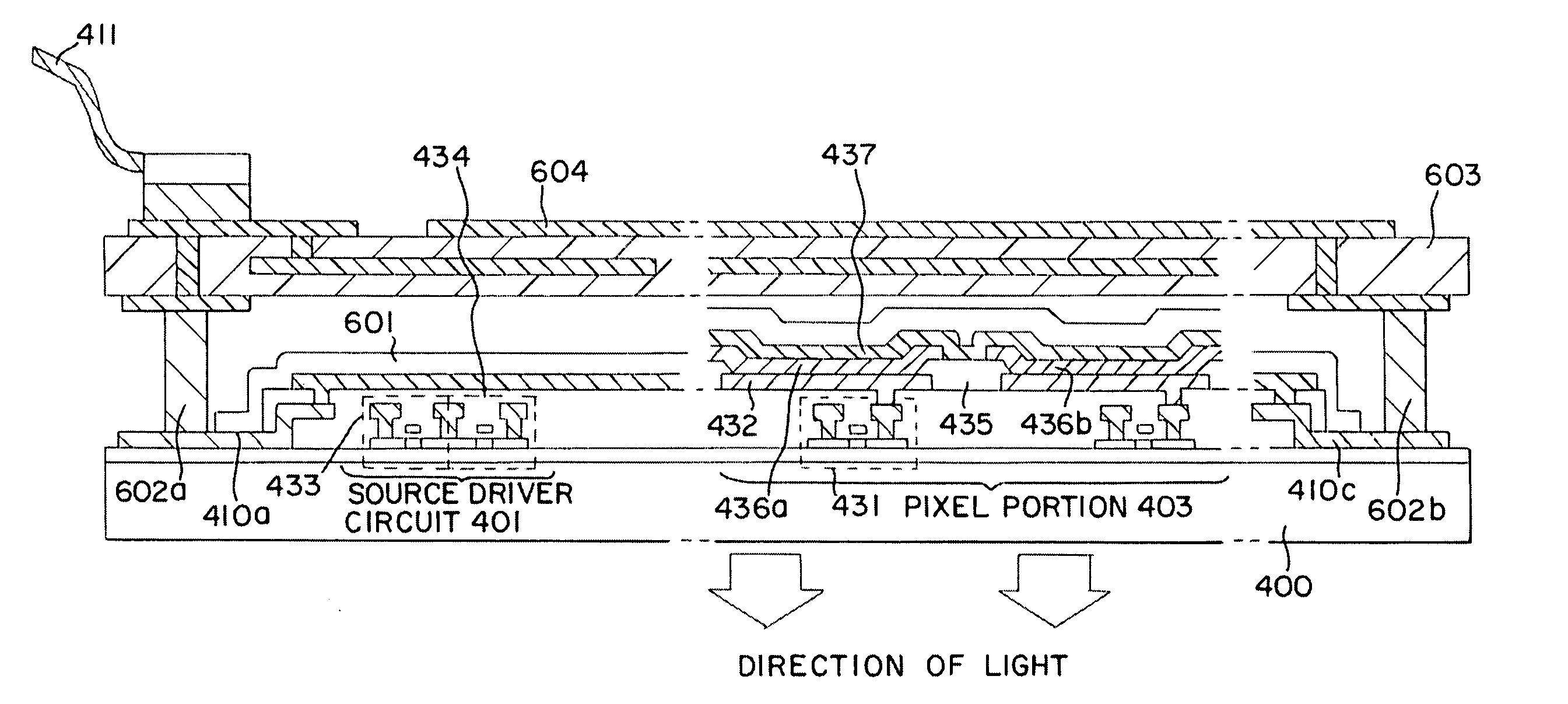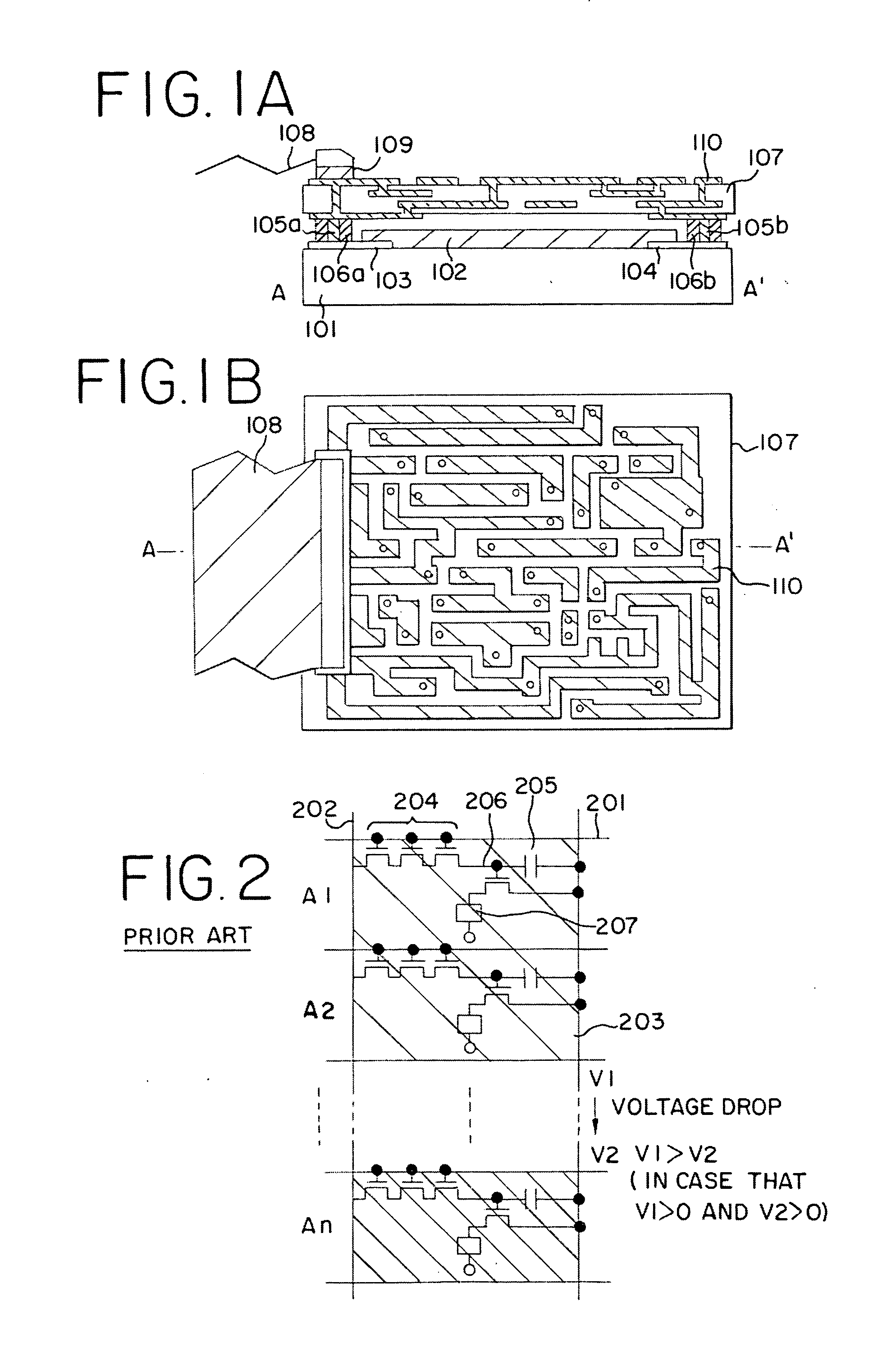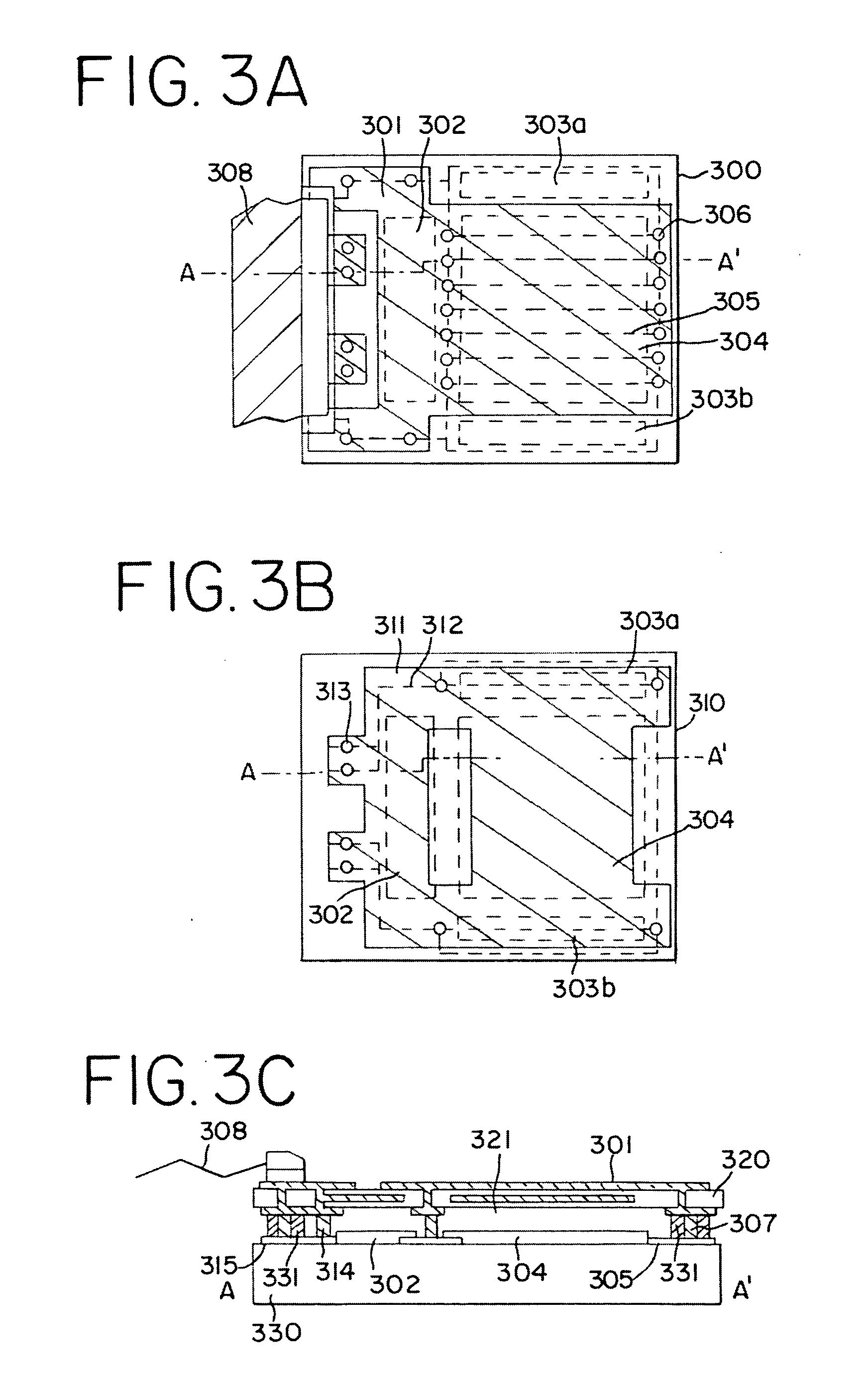Light-emitting device
a technology of light-emitting devices and circuits, applied in the direction of organic semiconductor devices, discharge tubes/lamp details, final product manufacturing, etc., can solve the problems of voltage drop, particularly conspicuous problems, wiring resistance, etc., and achieve the effect of enhancing the operating speed of the driver circuit portion and suppressing the delay of wiring
- Summary
- Abstract
- Description
- Claims
- Application Information
AI Technical Summary
Benefits of technology
Problems solved by technology
Method used
Image
Examples
embodiment 1
[0052] In Embodiment 1, an explanation will be made with reference to FIGS. 4A and 4B on an active matrix EL display device that is manufactured by employing the present invention. FIG. 4A is a top view of an element-formed substrate (denoted by reference symbol 400 in FIG. 4B) having an EL element formed thereon. Indicated by the dotted lines, reference symbol 401 denotes a source driver circuit, 402 denotes a gate driver circuit, and 403 denotes a pixel portion.
[0053] Further, reference symbol 404 denotes a printed wiring board, and a PWB side wiring 405 is formed thereon. The dotted line indicated by reference symbol 406 denotes a first sealing member, and in the inner side surrounded by the first sealing member 406, resin (denoted by reference symbol 407 in FIG. 4B) is provided between the printed wiring board 404 and the element-formed substrate 400.
[0054] It is to be noted that barium oxide (denoted by reference symbol 408 in FIG. 4B) is used as the moisture absorbent materi...
embodiment 2
[0065] In Embodiment 2, an explanation will be made with reference to FIGS. 5A and 5B on a passive matrix EL display device that is manufactured by employing the present invention. It is to be noted that FIG. 5A is a top view thereof and FIG. 5B is a cross-sectional view thereof taken along the line A-A of FIG. 5A.
[0066] In FIG. 5B, reference symbol 501 denotes an element-formed substrate made of plastic, and reference symbol 502 denotes an a node made of a compound of indium oxide and zinc oxide. In Embodiment 2, the anode 502 is formed by the evaporation method. Though not shown in FIGS. 5A and 5B, it is to be noted that a plurality of anodes are arranged in stripe shapes in a parallel direction in a defined space.
[0067] An insulating film 503 is formed such that it is orthogonal to the plurality of anodes 502 arranged in stripe shapes. In addition, the insulating film 503 is also provided in the gaps of the anodes 502 in order to insulate each of the anodes 502 separately. Ther...
embodiment 3
[0081] Shown in Embodiment 3 is a modified example of the structure of the EL display device described in Embodiment 1. The description thereof will be made with reference to FIG. 6. Structures of a TFT and an EL element formed on the element-formed substrate 400 are the same as those of FIGS. 4A and 4B. Therefore, only different components will be denoted with reference symbols and explained.
[0082] Upon forming a structure similar to that of Embodiment 1 up to the formation of the cathode 437, a passivation film 601 is further formed to a thickness of 50 to 500 nm (preferably between 300 and 400 nm) to cover the cathode 437. As the passivation film 601, a tantalum oxide film, a silicon nitride film, a silicon oxide film, a silicon oxide nitride film, or a lamination film of a combination thereof may be used. It is preferable that the film deposition thereof is performed at a temperature of 150° C. or less by vapor-phase deposition such that the EL element will not deteriorate.
[00...
PUM
| Property | Measurement | Unit |
|---|---|---|
| thickness | aaaaa | aaaaa |
| thickness | aaaaa | aaaaa |
| thickness | aaaaa | aaaaa |
Abstract
Description
Claims
Application Information
 Login to View More
Login to View More - R&D
- Intellectual Property
- Life Sciences
- Materials
- Tech Scout
- Unparalleled Data Quality
- Higher Quality Content
- 60% Fewer Hallucinations
Browse by: Latest US Patents, China's latest patents, Technical Efficacy Thesaurus, Application Domain, Technology Topic, Popular Technical Reports.
© 2025 PatSnap. All rights reserved.Legal|Privacy policy|Modern Slavery Act Transparency Statement|Sitemap|About US| Contact US: help@patsnap.com



